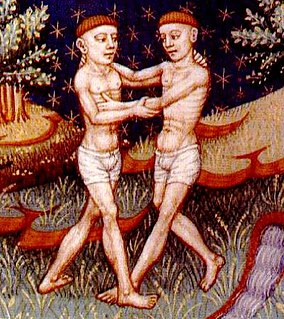
Hypertext Markup Language (HTML) is the standard markup language for documents designed to be displayed in a web browser. It can be assisted by technologies such as Cascading Style Sheets (CSS) and scripting languages such as JavaScript.

The MIT License is a permissive free software license originating at the Massachusetts Institute of Technology (MIT). As a permissive license, it puts only very limited restriction on reuse and has, therefore, an excellent license compatibility. The MIT license permits reuse within proprietary software provided that all copies of the licensed software include a copy of the MIT License terms and the copyright notice. The MIT license is also compatible with many copyleft licenses, such as the GNU General Public License (GPL); MIT licensed software can be integrated into GPL software, but not the other way around.
Scalable Vector Graphics (SVG) is an XML-based vector image format for two-dimensional graphics with support for interactivity and animation. The SVG specification is an open standard developed by the World Wide Web Consortium (W3C) since 1999.

The World Wide Web Consortium (W3C) is the main international standards organization for the World Wide Web.
The Unicode Consortium is a 501(c)(3) non-profit organization based in Mountain View, California. Its primary purpose is to maintain and publish the Unicode Standard which was developed with the intention of replacing existing character encoding schemes which are limited in size and scope, and are incompatible with multilingual environments. Unicode's success at unifying character sets has led to its widespread adoption in the internationalization and localization of software. The standard has been implemented in many recent technologies, including XML, the Java programming language, Swift, and modern operating systems.

A consortium is an association of two or more individuals, companies, organizations or governments with the objective of participating in a common activity or pooling their resources for achieving a common goal.
The space-grant colleges are educational institutions in the United States that comprise a network of 52 consortia formed for the purpose of outer-space-related research. Each consortium is based in one of the 50 states, the District of Columbia, or Puerto Rico, and each consists of multiple independent space-grant institutions, with one of the institutions acting as the lead.

Amaya is a discontinued free and open source WYSIWYG web authoring tool with browsing abilities.
ISO 15924, Codes for the representation of names of scripts, defines two sets of codes for a number of writing systems (scripts). Each script is given both a four-letter code and a numeric one. Script is defined as "set of graphic characters used for the written form of one or more languages".
Gene ontology (GO) is a major bioinformatics initiative to unify the representation of gene and gene product attributes across all species. More specifically, the project aims to: 1) maintain and develop its controlled vocabulary of gene and gene product attributes; 2) annotate genes and gene products, and assimilate and disseminate annotation data; and 3) provide tools for easy access to all aspects of the data provided by the project, and to enable functional interpretation of experimental data using the GO, for example via enrichment analysis. GO is part of a larger classification effort, the Open Biomedical Ontologies (OBO).
libwww is a modular client-side web API for Unix and Windows. It is also the name of the reference implementation of the libwww API.

Gemini (pronunciation: JEM-in-eye is the third astrological sign in the zodiac, originating from the constellation of Gemini. It is a positive mutable sign. Under the tropical zodiac, the sun transits this sign between about May 21 and June 21. Gemini is represented by the twins Castor and Pollux, known as the Dioscuri.
Calliini is a tribe of longhorn beetles of the Lamiinae subfamily.
Callisema is a genus of longhorn beetles of the subfamily Lamiinae.
Callisema elongata is a species of beetle in the family Cerambycidae. It was described by Galileo and Martins in 1992. It is known from Colombia and Venezuela.
Callisema iucaua is a species of beetle in the family Cerambycidae. It was described by Martins and Galileo in 1996. It is known from Peru.
Callisema rufipes is a species of beetle in the family Cerambycidae. It was described by Martins and Galileo in 1990. It is known from Brazil.
Callisema socium is a species of beetle in the family Cerambycidae. It was described by Martins and Galileo in 1990. It is known from Argentina and Brazil.
A Uniform Resource Locator (URL), colloquially termed a web address, is a reference to a web resource that specifies its location on a computer network and a mechanism for retrieving it. A URL is a specific type of Uniform Resource Identifier (URI), although many people use the two terms interchangeably. Thus http://www.example.com is a URL, while www.example.com is not.</ref> URLs occur most commonly to reference web pages (http), but are also used for file transfer (ftp), email (mailto), database access (JDBC), and many other applications.
The Ocmulgee shiner is a species of fish in the Cyprinidae family. It is endemic to the United States where it occurs in the Altamaha and Ogeechee river drainages in Georgia.






